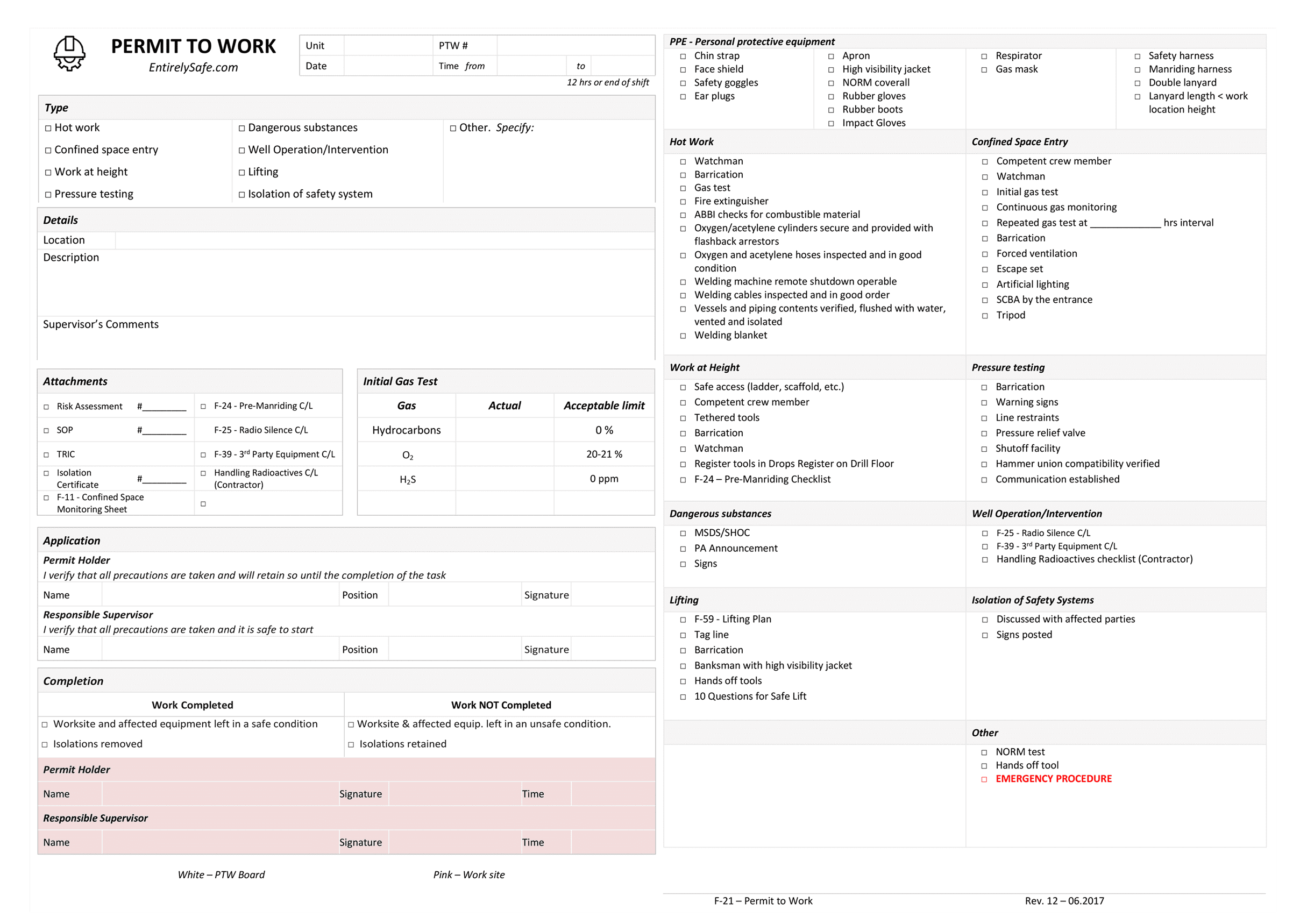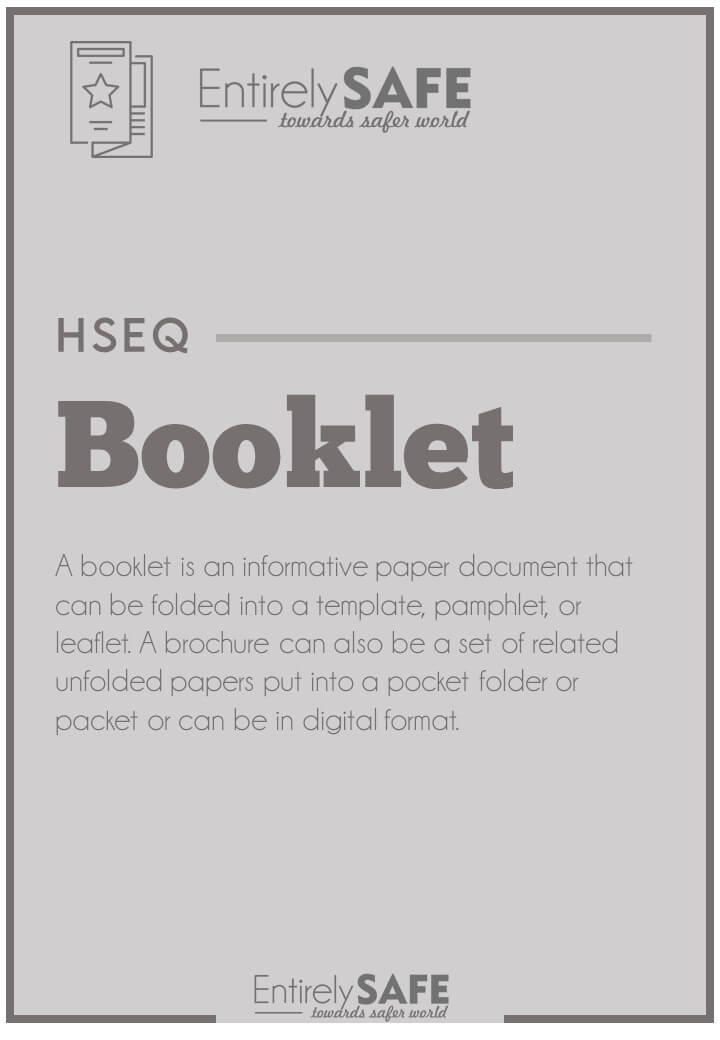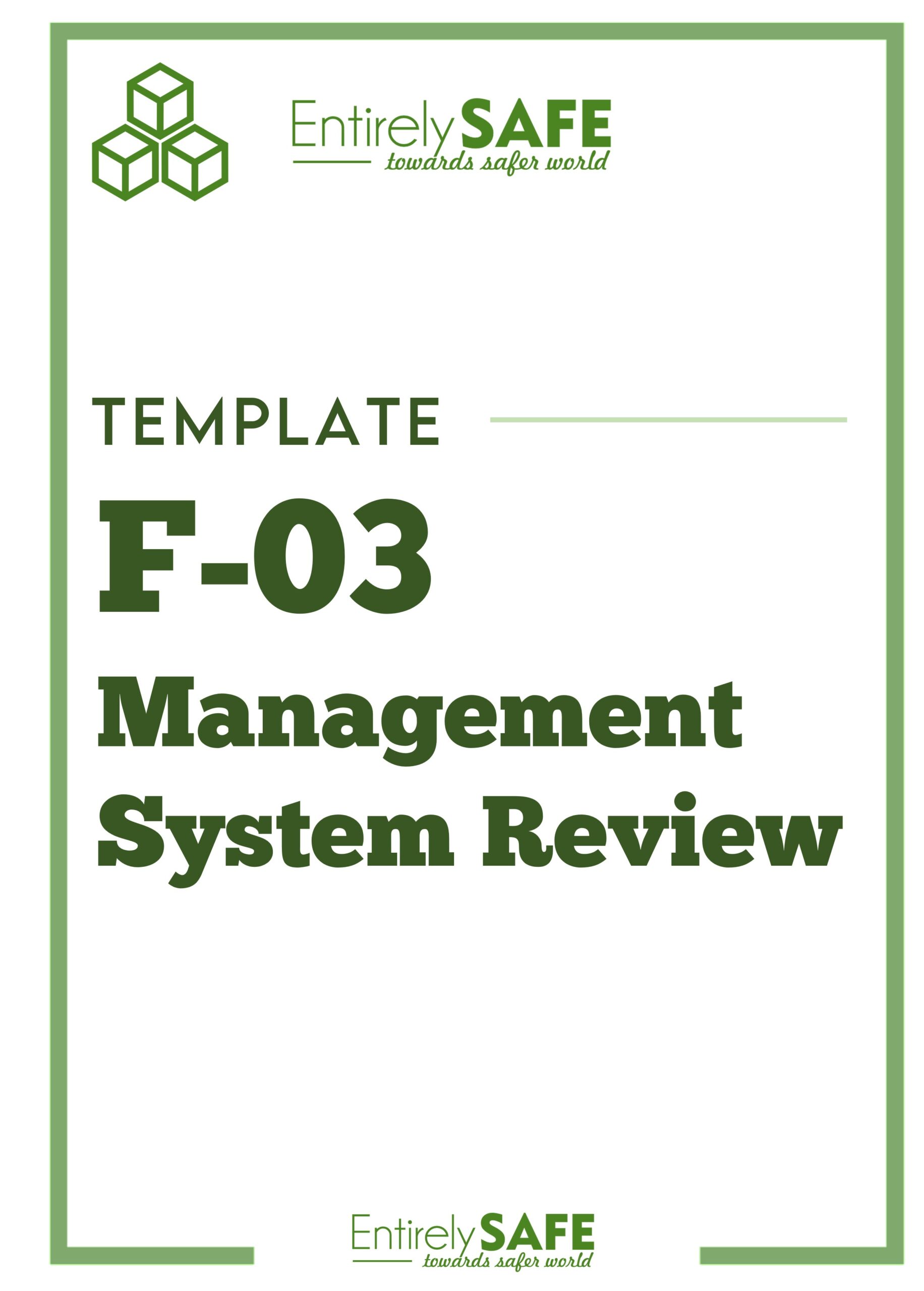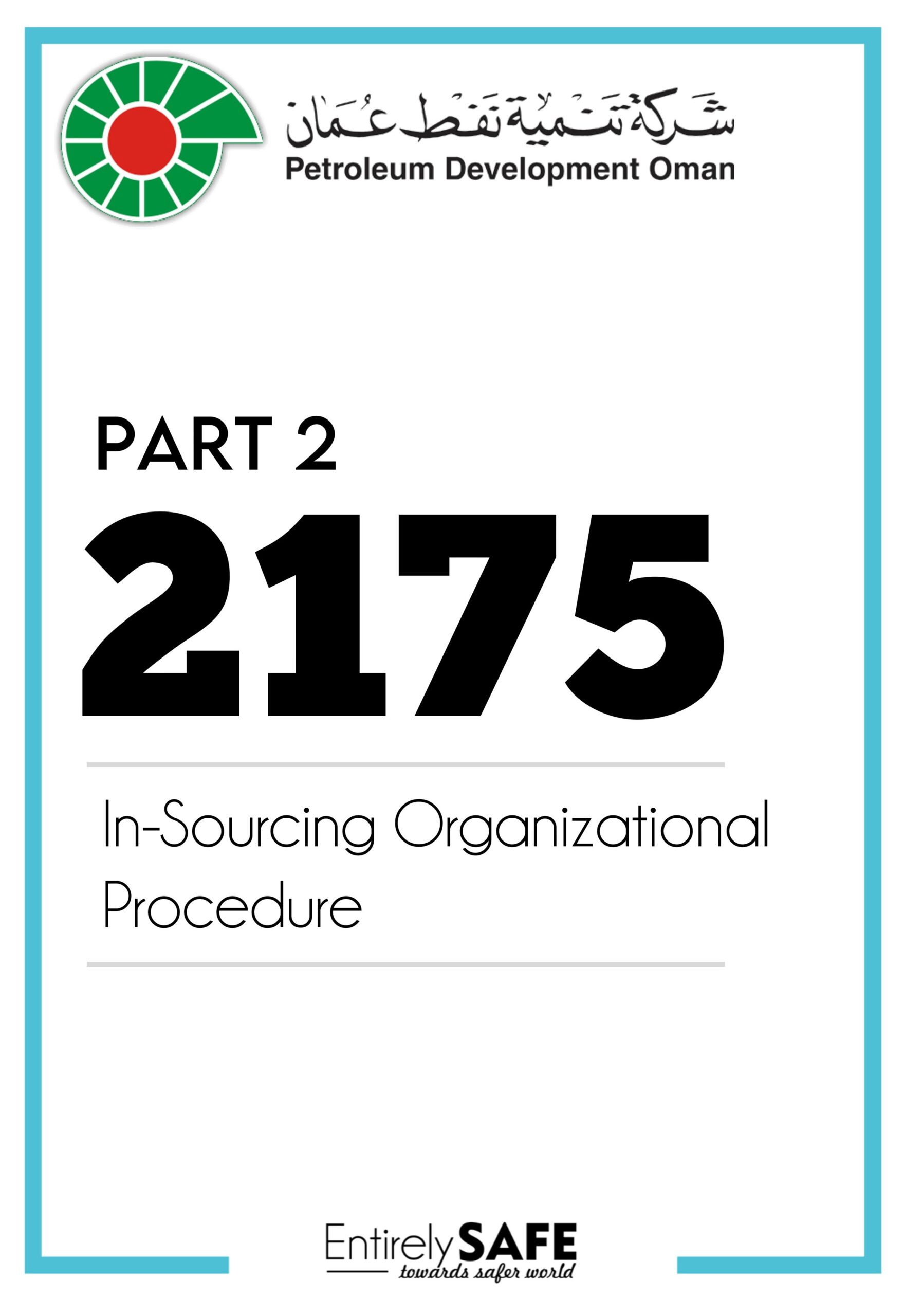‘Permit to Work Form’ Template
ID:
F-21
Version:
1
File Type:
DOC
Size:
0.5 Mb
Organization:
EntirelySafe.com
Published:
2022
Country:
Global
Type:
Template
Pages:
1 pages
Language:
English [EN]
Permit-to-work (PTW) refers to management systems used to ensure that work is done safely and efficiently. These are used in hazardous industries and involve procedures to request, review, authorize, document, and most importantly, de-conflict tasks to be carried out by front-line workers. Permit to work is an essential part of the control of work (COW). Control of work is made up of permit to work, hazard identification and risk assessment (RA), and isolation management (IM).
Permit to work is a core element of a safe system of work systems, that along with risk assessment and isolation planning, enable as low as reasonably practicable (ALARP) reduction of unsafe activities in non-trivial work environments. Permit to work adherence is essential in process safety management.
Instructions or procedures are often adequate for most work activities, but some require extra care. A permit to work system is a formal system stating exactly what work is to be done, where, and when. A responsible person should assess the work and check safety at each stage. The people doing the job sign the permit to show that they understand the risks and precautions necessary.
Permits are effectively a means of communication between site management, plant supervisors and operators, and those who carry out the work. Examples of high-risk jobs where a written permit to work procedure may need to be used include hot work such as welding, vessel entry, cutting into pipes carrying hazardous substances, diving in the vicinity of intake openings, and work that requires electrical or mechanical isolation. It is also a means of coordinating different work activities to avoid conflicts.
A permit to work is not a replacement for robust risk assessment but can help provide context for the risk of work to be done. Studies by the UK Health and Safety Executive have shown that the most significant cause of maintenance-related accidents in the UK chemical industry was a failure to implement effective permit-to-work systems. Common failures in control of work systems are a failure to follow the permit to work or isolation management procedures, risk assessments that are not suitable and sufficient to identify the risks, and/or the control measures and a combination of the two.










The Download does not work?
Hi Alan,
Thanks for the message, it does – for logged-in users only.
Its absolutely FREE, Register today – https://entirelysafe.com/login
regards,
Lucky
i am logged in and this download does not work
Relay verey lacky
Yes sure downloading